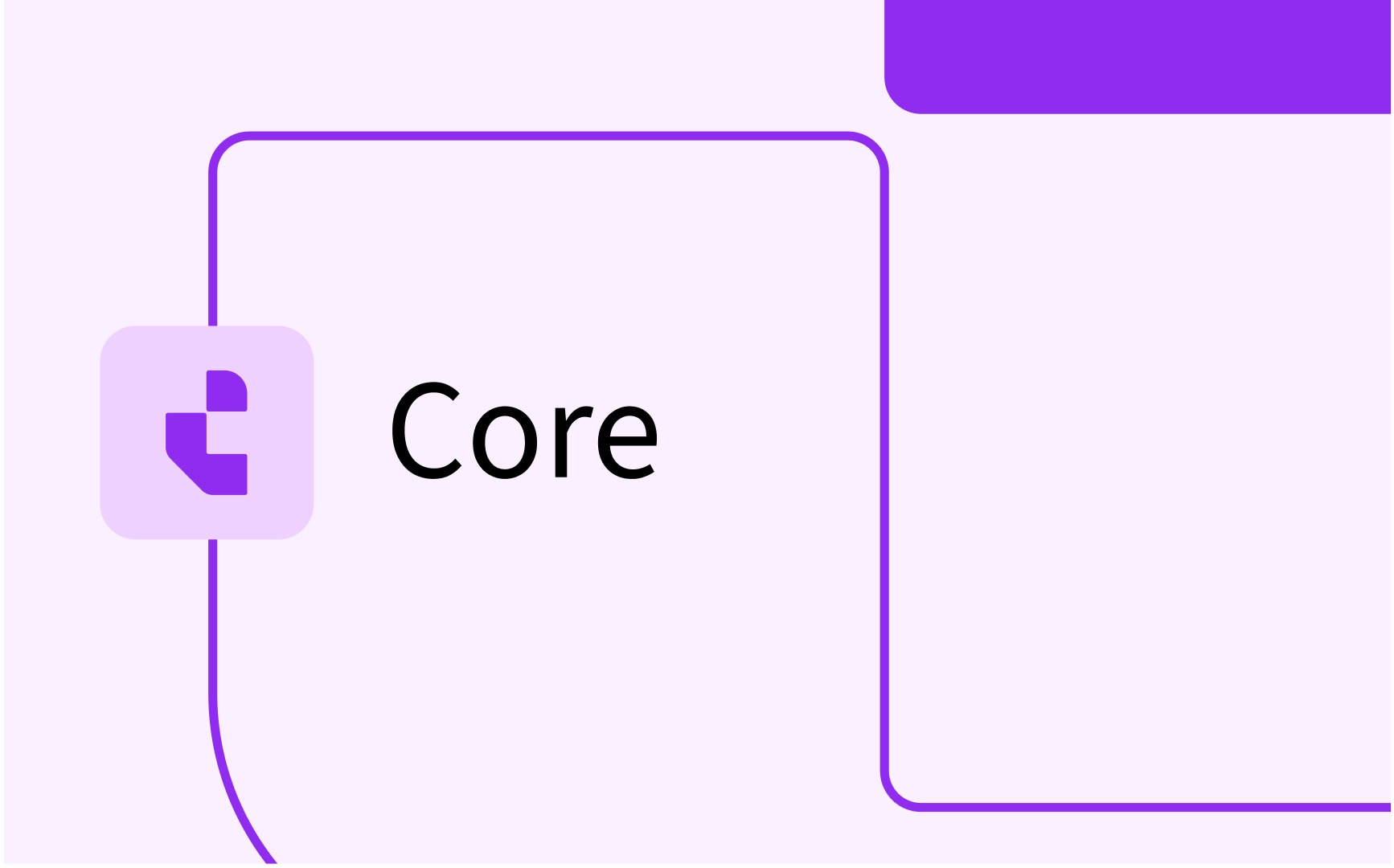Study guide: basic configuration and administration

- In this lesson:
- 1Manage academic years
- 2Import results (ad-hoc and scheduled)
- 3Manage references
- 4Configure labels
- 5Validate offering periods
- 6Configure parameters (system settings)
- 7
- 8
- 9
- 10
- 11
Manage academic years
The academic years that have been interfaced to the study guide are available via the administration menu.
Go to the Administrator -> Academic years to open the Academic Year management screen.

Use the pencil to configure the visibility of the academic year.
In the example the year 2023-2024 is active and therefor available to the study guide users.
In case multiple years are 'active' a toggle is provided to the users to switch between the 'active' years.
Adding new academic years is not managed via the Academic Years section.
A new year is automatically created via a manual import of a new year. If the import succeeds, the year is added to the list of academic years and can be configured as active.
Go to Administrator -> import to start the import of an existing or new year.

Import results (ad-hoc and scheduled)
The Job report provides an overview of all import actions that has been executed, the duration and the status.
The example below shows the overview of the daily schedule import job that imports all data for a given academic year, and an ad-hoc import for only the references.
The synchronisation can be executed:
- Scheduled: the system administrator has configured a time the entire study guide is synchronised
- Ad-hoc (complete): the administrator can execute an ad-hoc synchronisation of the entire study guide (Go to the Administrator -> Import)
- Ad-hoc (study, group, module): the administrator can execute an ad-hoc sync of an object via the Import button on the object detail screen (user interface).
- Ad-hoc (references): the administrator can execute an ad-hoc sync of the references from the References overview report.
Synchronisation will run in the background.
Go to the Administrator -> Jobs to open the Jobs report screen, and validate the status of the Job.
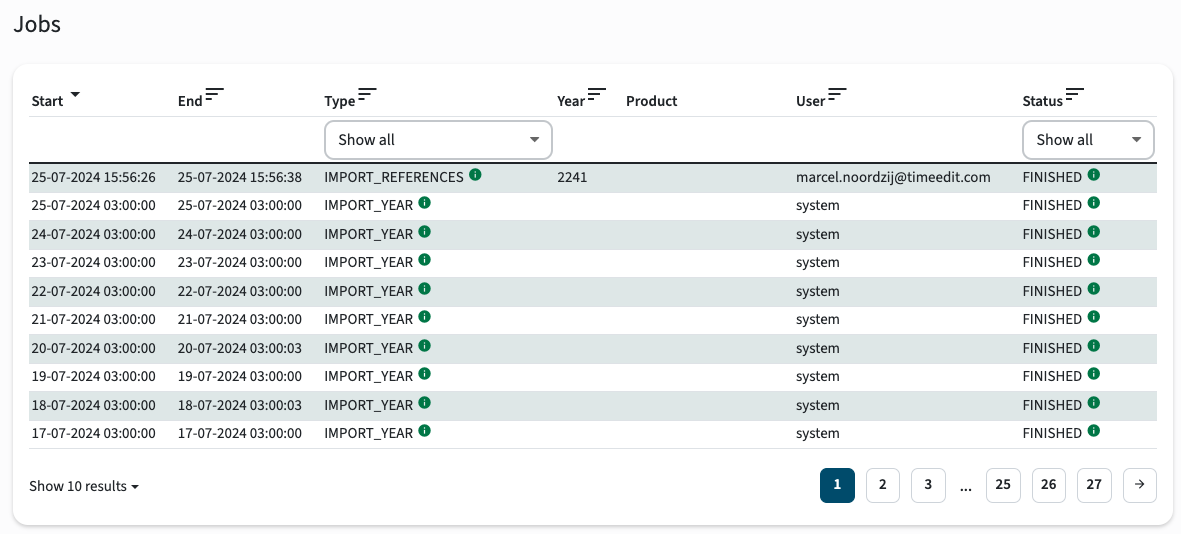
Manage references
The References option is used to manage the reference information automatically imported from Curriculum and shown to the users in filters and details pages.
Go to the Administrator -> References to open the reference management screen.
The screen below shows the configuration for the reference list 'difficulty' that is provided as just numeric codes by the curriculum management system.
The Import button at the right top corner can be used for an ad-hoc synchronisation of only the reference information.
The detailed configuration of the user interface will also enable to show only the label (default behaviour) or a styled combination of code and name.
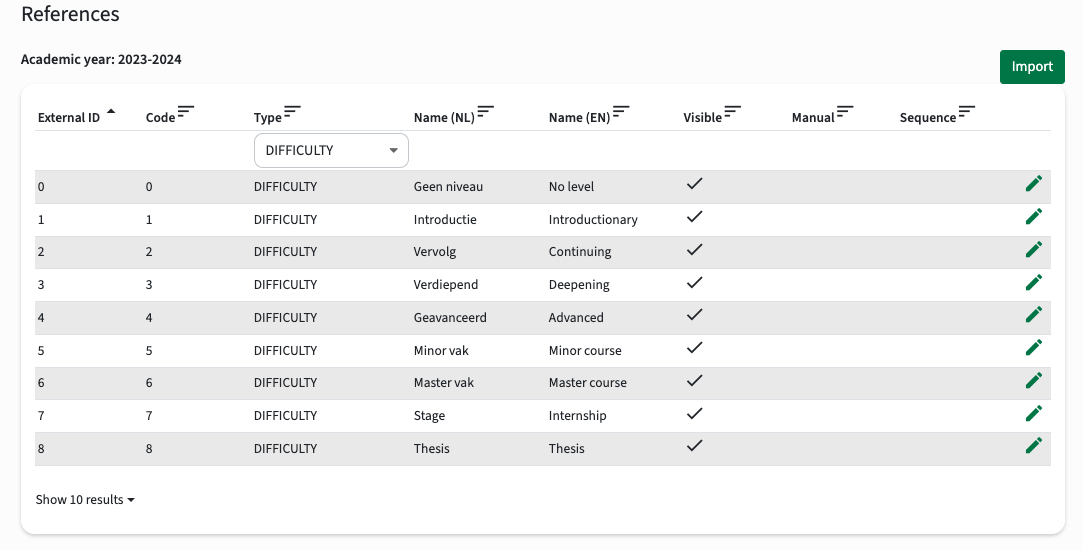
Use the select box for Type to switch between the different imported reference types. The options shown are the different values for references that have been imported from Curriculum
Click on Edit to modify an existing reference item configuration.
The example below shows the configuration for the reference item DIFFICULTY Deepening (code = 3). The code cannot be changed, to prevent admins from breaking it ;-)
Options:
- Name: name / label shown to the user for the reference item
Depending on the system configuration the name for the configured languages can be set. - Visible: defines if this specific value should be shown to the user, or should not be shown. This option can be used to limit the offered filter options.
- Manual: defines this value has been adjusted manually and should not be overwritten by the automated import function
- Sequence: the order of the option in a filter.

Configure labels
The configure labels option is used to define the different labels used in the application. Labels are all texts (links, fixed, buttons, messages) that are standard offered by the application and that are NOT customer data related. The labels used in the customer data context are configured via the menu option.
Go to the Administrator -> Labels to open the label management screen.
Use the top-filter to search for specific labels and use the Language selector to only select the relevant language.
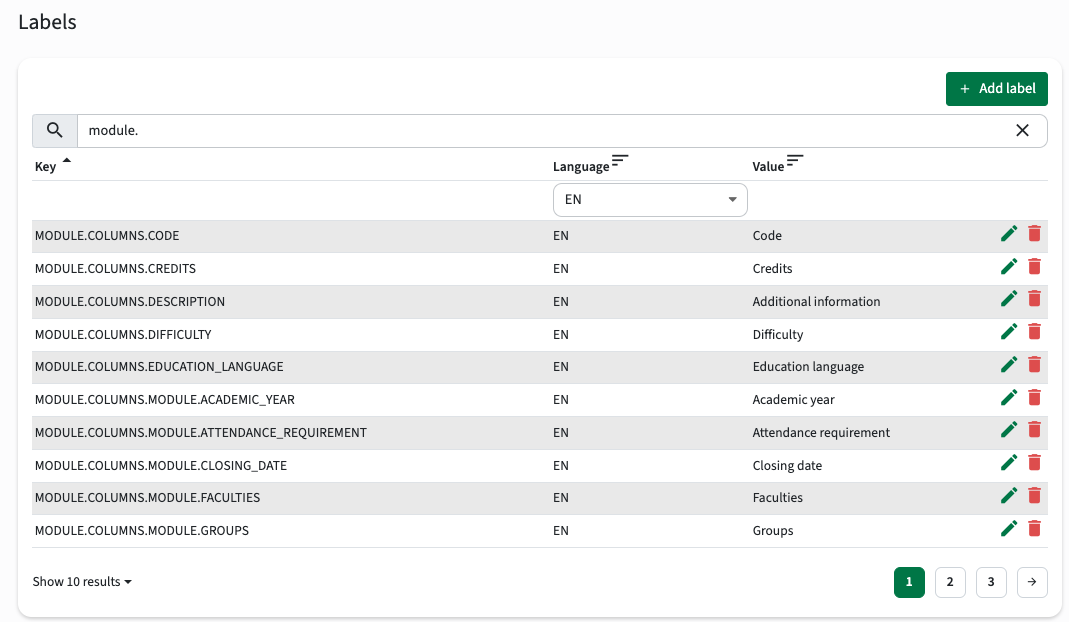
The example below shows the configuration of the label for the module education language.
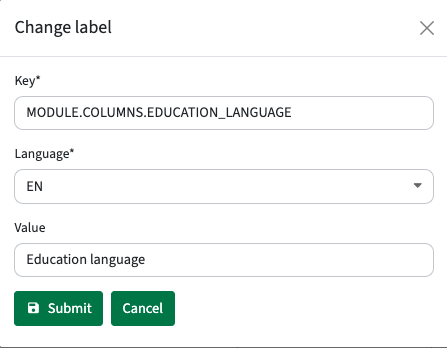
Validate offering periods
The periods that have been exchanged to the study guide are available via the administration menu.
Go to the Administrator -> Periods to open the Period validation screen.
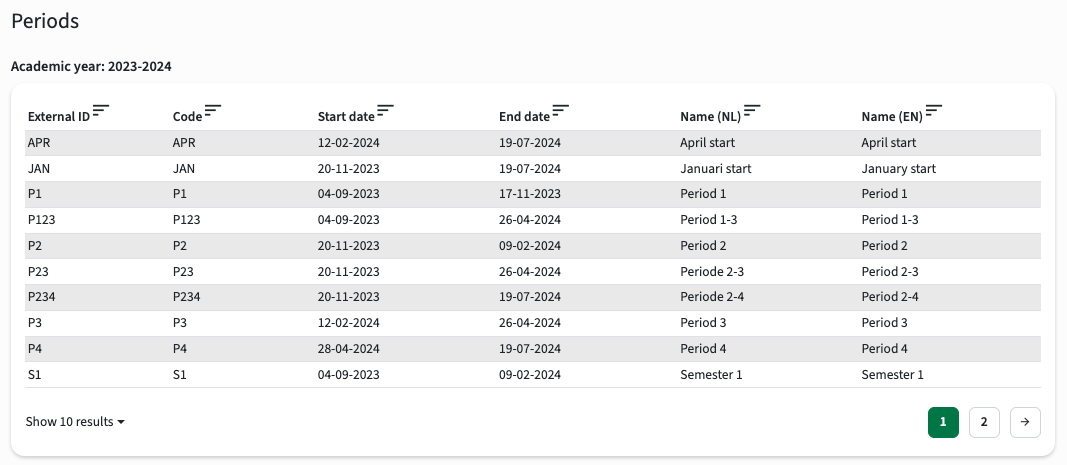
The report on periods is for validation only and can be used to check if all periods have been exchanged from the source system.
Configure parameters (system settings)
The generic behaviour of the study guide is defined using the Parameters.
Go to the Administrator -> Parameters to open the Parameter configuration screen.

Supported configuration options are:
- customer.style: configuration that enables usage and switching between different visual themes (end user)
- description.format: the format used to render the descriptive texts. Supported values are html and markdown
- import.enabled: configuration to enable the execution of the scheduled 'full synchronisation job'
- import.exclude.faculties: configuration to exclude the import of faculties (and faculty information)
- import.latest: configuration if the 'published' information is synchronised, or if the 'latest' (and not yet approved texts) is synchronised
- import.years: configuration of the (academic) years to be synchronised. Multiple years can be defined, separated by , (e.g. 2022, 2023)
- languages: configuration of the languages supported in the user interface.
- languages.default: configuration of the default language if this cannot be detected automatically
- visible.years: configuration of the years that will be available for the users. Multiple years can be defined, separated by , (e.g. 2022, 2023)



